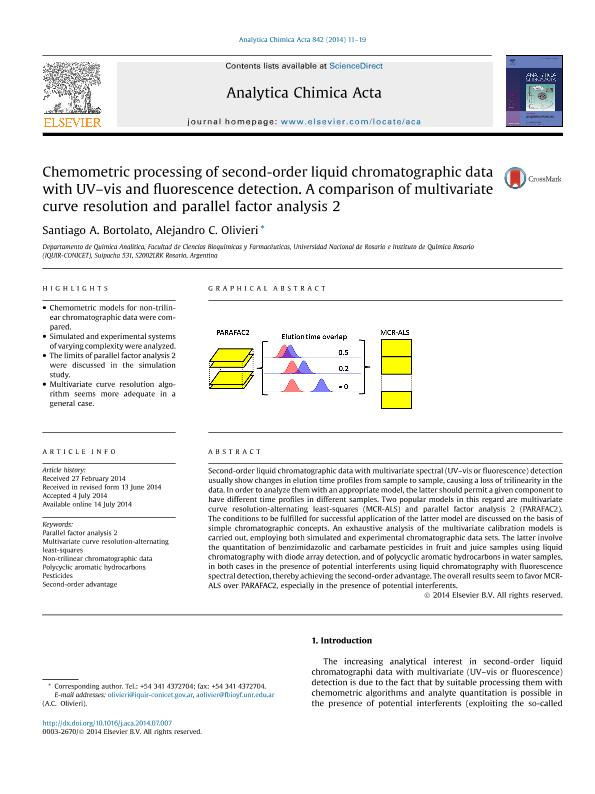Artículo
Chemometric processing of second-order liquid chromatographic data with UV-vis and fluorescence detection. A comparison of multivariate curve resolution and parallel factor analysis 2
Fecha de publicación:
09/2014
Editorial:
Elsevier
Revista:
Analytica Chimica Acta
ISSN:
0003-2670
Idioma:
Inglés
Tipo de recurso:
Artículo publicado
Clasificación temática:
Resumen
Second-order liquid chromatographic data with multivariate spectral (UV?vis or fluorescence) detection usually show changes in elution time profiles from sample to sample, causing a loss of trilinearity in the data. In order to analyze them with an appropriate model, the latter should permit a given component to have different time profiles in different samples. Two popular models in this regard are multivariate curve resolution-alternating least-squares (MCR-ALS) and parallel factor analysis 2 (PARAFAC2). The conditions to be fulfilled for successful application of the latter model are discussed on the basis of simple chromatographic concepts. An exhaustive analysis of the multivariate calibration models is carried out, employing both simulated and experimental chromatographic data sets. The latter involve the quantitation of benzimidazolic and carbamate pesticides in fruit and juice samples using liquid chromatography with diode array detection, and of polycyclic aromatic hydrocarbons in water samples, in both cases in the presence of potential interferents using liquid chromatography with fluorescence spectral detection, thereby achieving the second-order advantage. The overall results seem to favor MCR-ALS over PARAFAC2, especially in the presence of potential interferents.
Palabras clave:
Parafac2
,
Mcr-Als
,
Chromatography
,
Fluoescence
Archivos asociados
Licencia
Identificadores
Colecciones
Articulos(IQUIR)
Articulos de INST.DE QUIMICA ROSARIO
Articulos de INST.DE QUIMICA ROSARIO
Citación
Bortolato, Santiago Andres; Olivieri, Alejandro Cesar; Chemometric processing of second-order liquid chromatographic data with UV-vis and fluorescence detection. A comparison of multivariate curve resolution and parallel factor analysis 2; Elsevier; Analytica Chimica Acta; 842; 9-2014; 11-19
Compartir
Altmétricas




